Europe is embarking on a grand spending programme akin to the near trillion euro response to the Covid pandemic.
Much of the rhetoric is redolent of the sense of existential threat the pandemic posed.
This time the threat is Russia.
"There is an intelligence assessment that Russia will test EU defences within three to five years," said a senior EU official.
Like the pandemic response, the sums are huge and proposals are being agreed at breakneck speed.
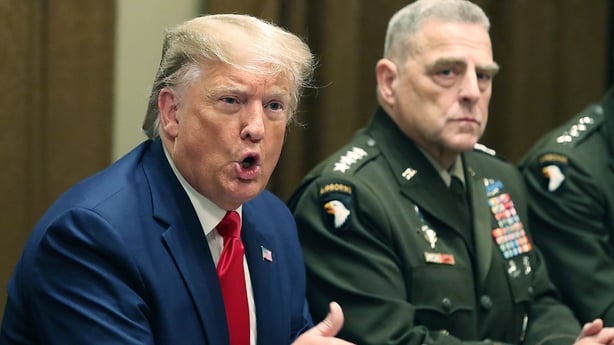
In 2020, the emergency was driven by the high-velocity brutality of a killer virus; this time it's the unholy partnership between Donald Trump and Vladimir Putin.
The EU's White Paper on Defence has three objectives: Supporting Ukraine in its darkest hour, rendering it a "steel porcupine" so that Russia will think twice about re-invading; replenishing Europe’s depleted stocks to dissuade any Kremlin designs on eastern Europe, and preparing for a potential US pull out of Europe.
"If we invest enough in defence, if we build our capabilities, then it will also deter aggressors from attacking us. If we don't do that, weakness invites aggressors to attack," Kaja Kallas, the EU's foreign policy chief told reporters on Thursday.
Free riding
It is a watershed moment.
Having endured relentless barbs (many inaccurate) from Donald Trump that Europe has been free riding on post war US security, there is a consensus that Europe is finally reversing decades of declining defence spending and over-reliance on the United States.
The White Paper promises up to €800 billion in new spending over five years; in parallel an Anglo-French coalition of the willing aims to provide a boots-on-the-ground "reassurance force" in a post-ceasefire Ukraine.
Germany has just changed its debt brake to permit wholesale borrowing for defence and infrastructure, while the Financial Times has reported on a plan by Europe's major military powers to gradually take on the lion's share of NATO's commitments in order to dissuade President Trump from a unilateral pull-out.
Yet many questions remain.
After briefings via G7 national security advisors on Wednesday, EU officials were surprisingly upbeat about the Trump-Putin phone call and the follow up call with Ukraine's President Volodymyr Zelensky.
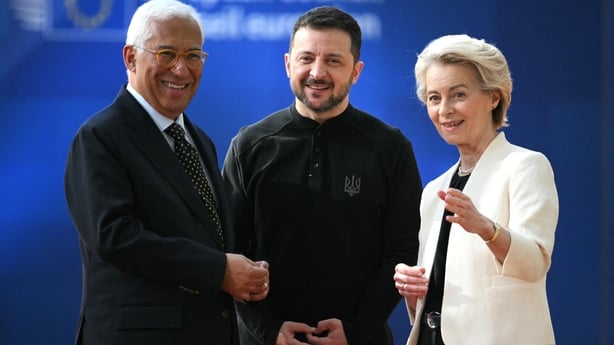
Of most interest was the plan to halt attacks on energy infrastructure and over the Black Sea, both areas where Europe has been pouring in resources (restoring Ukraine's maritime access will be vital to Kyiv recovering export markets in Asia).
With the exchange of hundreds of prisoners, it was "a good day for Ukraine," in the words of one senior EU figure.
Yet there remains deep cynicism about Russian President Vladimir Putin's motives.
He gave only the most minor of concessions: Refraining from hitting energy infrastructure (just as spring has arrived) while demanding the abject surrender of Ukraine. There could be no mobilisation of Ukrainian troops (but nothing to stop Russia), no western military or intelligence support, Russia keeping the regions it has illegally annexed, no European peacekeepers in Ukraine, even if not under a NATO flag.
'Trump holds many cards'
In effect, President Putin had humiliated President Trump, who naturally described the phone call in glowing terms.
With President Trump willing to use blackmail and bullying to pressurise President Zelensky into agreeing a minerals deal and a full ceasefire (which was promptly rejected by Russia), it is difficult not to conclude that, when push comes to shove, President Trump will revert to bullying Ukraine over standing up to Russia.
"Trump holds many cards," says Rafael Loss, policy fellow at the European Council on Foreign Relations (ECFR).
"The past few weeks have shown he is prepared to use them against Ukraine, but not to make Russia move from its maximalist demands.
"He could increase military aid or tighten the sanctions regime.
"Instead, he wants to normalise relations with Russia. Ukraine seems to be an obstacle for Trump in this regard."
Part of that normalisation appears to be President Trump's enthusiasm for business deals. The feeling in Moscow is mutual.
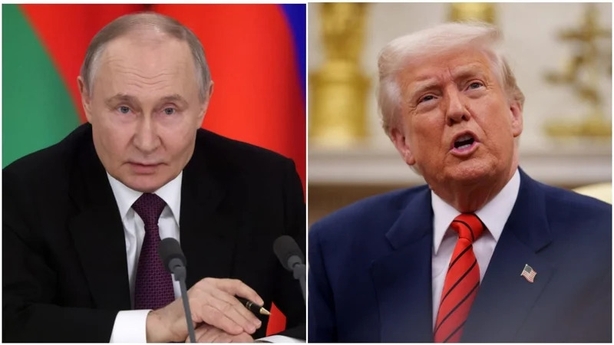
"American companies lost over $300bn by leaving the Russian market," President Putin’s economic envoy Kirill Dmitriev said last week.
"Some American companies will come back, but we see great prospects in creating joint ventures with Russian companies."
For this reason, Europe has had little reason to rethink its re-armament programme in case the chips fall favourably for Ukraine.
The EU's objective is to boost the areas where there are significant gaps: integrated air-defence, deep strike precision missiles, satellites, drones and anti-drone, artillery ammunition etc.
Officials admit the sums are huge.
The commission will set up a so-called SAFE loans programme for those member states who need it (€150bn over five years) while relaxing the EU's fiscal rules allowing capitals to spend more on defence (with a cap in spending over the 3% of GDP rule set at 1.5% officials say member states could in theory spend up to €650bn, meaning a total of €800bn).
EU leaders - with the exception of Hungary's Viktor Orbán - are convinced that if Russia wins in Ukraine, then within five years it could attack an EU member state.
It runs an irreversible war economy, spending 9% of GDP on defence and gaining battlefield experience.
Hybrid attacks
One senior EU source said the magnitude and diversity of hybrid attacks against Europe by Russia's military and foreign intelligence services - the GRU and SVR - have become breathtaking.
From sabotaging transport infrastructure, to the assassination plot against Armin Papperger, the head of Germany's largest weapons manufacturer Rheinmetall.
"We were used to cyberattacks, the penetration of fighter jets in the Baltic, we had to get used to energy blackmail, then we had had to get used to the weaponisation of migrants at the Finnish and Lithuanian borders," the source told a recent briefing.
"Now we have hybrid attacks on our physical infrastructure, like undersea data cables."
Officials say a grim outcome for Ukraine needs to be conveyed to citizens so they have time to consider the trade-offs that an increase in defence spending might entail.
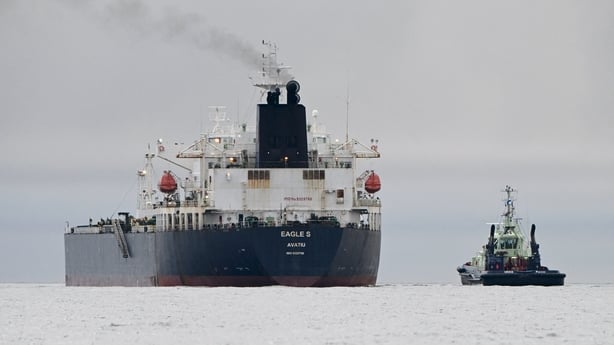
They are painfully aware that both the €150bn SAFE loans scheme, and the relaxation of fiscal rules to allow member states to spend more, would both mean an increase in long term debt and that European voters are "not there yet" when it comes to tax increases and spending cuts.
As such, the European Commission believes the conversation should start now.
Yet, for all the talk of a united Europe rising to the moment, familiar fractures opened up at this week’s summit, partly driven by traditional divergences on money but also geographical proximity to Russia.
Greece, France, Spain and Italy, are pushing for Eurobonds - joint EU borrowing - on the basis that the White Paper options would just add to their debt pile; the Dutch and Swedes, who would largely be paying the money back, are dead set against.
Spanish Prime Minister Pedro Sánchez spoke of "security" rather than "defence", whereby security covers a multitude of vulnerabilities including migration and climate change.
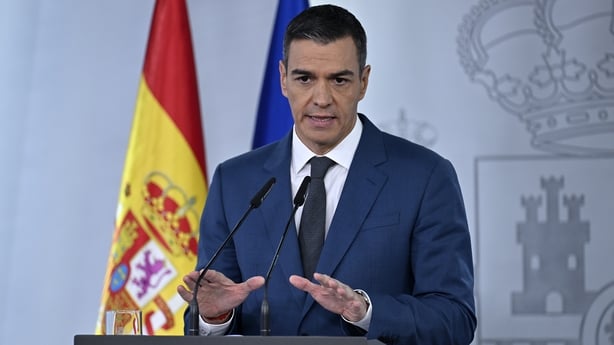
On 13 March, he said that in contrast to the Baltic countries, where deterrence was all about defence, Spain was different.
"Our threat is not a Russia bringing its troops across the Pyrenees to the Iberian Peninsula", he said, but in cyber attacks, the fight against terrorism and civil protection.
Some of the divisions are political.
Prime Minister Sánchez has several hard left members in his coalition who have opposed military support for Ukraine and sanctions against Russia, and the same is true for Italy's Giorgia Meloni, who relies on the Russia-friendly Lega party.
Both leaders have objected to the term 'ReArm Europe’ used to brand the increase in spending.
The Kallas plan
Kaja Kallas' bid to conjure up €40bn in immediate military support is another case in point.
President Trump's sudden suspension of military aid has left Ukraine badly exposed, but it is also the lopsided nature of European support (Denmark has provided more military support than Italy, France and Spain combined) that prompted Ms Kallas to get richer countries like France and Italy to spend more, based on the EU's GNI redistribution key.
The plan failed to get support.
France felt it was an ambush by the former Estonian prime minister, who as High Representative for Foreign Policy is supposed to forge consensus before launching initiatives.
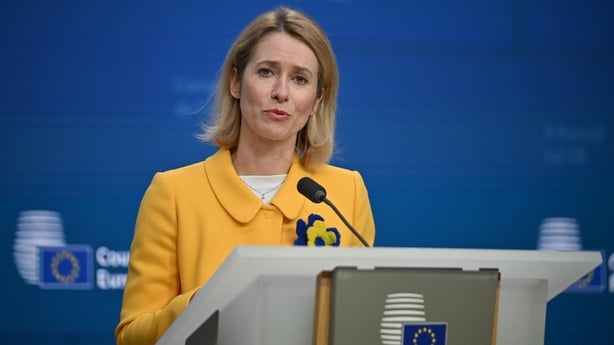
In the end, she proposed an initial €5bn to provide Ukraine with two million rounds of high-calibre ammunition, but even that did not make it over the line.
Ireland was signed up to the Kallas plan.
Tánaiste Simon Harris spoke to her from the US last weekend and mandated Irish officials in Brussels to make clear Ireland was on board to provide non-lethal support, provided there was consensus at the summit.
As the €40bn target dropped to €20bn last weekend, Ireland’s contribution would have been €315m according to the redistribution key, taking account of some €100m already approved by the Cabinet in early March.
Around €80m of the latter will go towards joint procurement partnerships.
Essentially, Ireland will spend in Ukraine's indigenous arms industry, based on a model that has been developed between Ukraine and Denmark, joining other member states along the same lines, in order to deliver Ukraine non-lethal support.
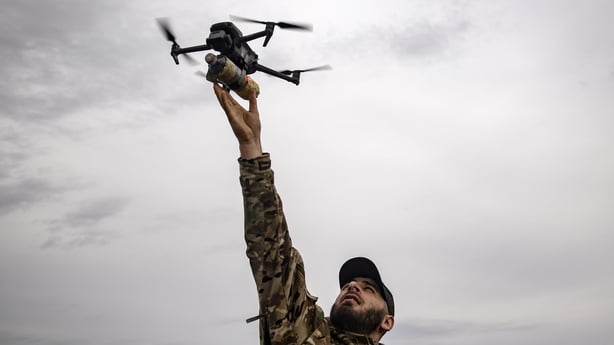
Ukraine’s foreign minister Andrii Sybiha told Mr Harris at the Munich Security Conference that Kyiv needed "non-lethal elements of air-defence systems, such as radar," according to a briefing note.
Ukraine has also asked Ireland for jamming equipment as well as unarmed intelligence, surveillance and reconnaissance drones and armoured personnel carriers.
Some of this non-lethal support would come via Ukraine’s own defence industry.
The other €20m of the €100m would be split between training de-mining battalions and enhancing Ukraine’s cybersecurity defences.
Irish involvement
At the summit on Thursday, Taoiseach Micheál Martin said Ireland was "supportive" of the commission's White Paper proposals, adding that they had only just been published.
But could Ireland benefit from the promise of billions of euro in soft loans in order to meet our defence needs, for example in protecting undersea cables?
The Defence Forces review in 2020 warned that the Naval Service had no anti-submarine, radar or air-defence capability, meaning the State’s ability to deter Russian sea-borne intelligence gathering was "exceptionally limited".
The 2022 Commission on the Defence Forces report concluded that if Ireland were to increase its capabilities to "Level of Ambition 2", it would require a minimum of nine modern ships with "enhanced air, surface and sub‐surface search capabilities" supported by a range of other technologies.
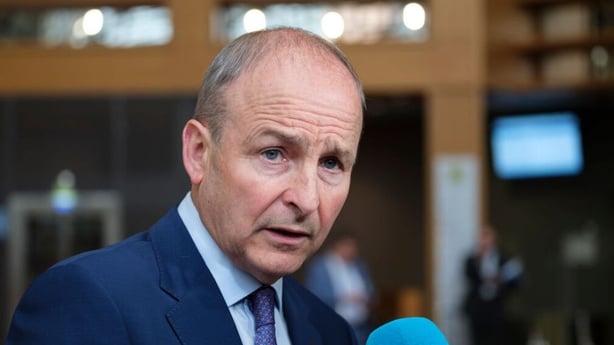
The same year the coalition proposed a defence budget increase of €1.5bn, the largest ever increase, to meet Level of Ambition 2 by 2028.
The view in Government circles is that the funding is there, notwithstanding annual Department of Finance reviews, to get to that target without having recourse to the EU loans.
Put more delicately, would the Government get itself into more debt to spend on defence compared to other public service needs? Welcome to the European debate, with Russia looking on.
"The Department of Finance will always give you the prudential line," said one Government source.
"Suppose the public finances came under pressure, because of Trump and tariffs and exports are going down and the pharma sector needs to be watched?
"Finance would say all the risks are on the downside and would be cautious about significant increases in defence expenditure when you have other more pressing political commitments like housing."
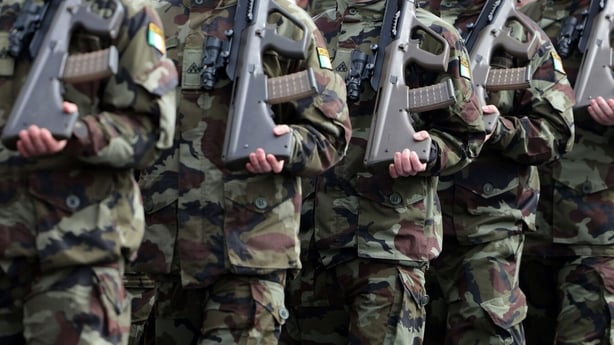
Indeed, Sinn Féin was this week quick to denounce the EU defence spending plans and questioned whether or not it could impact Irish neutrality.
"It's disappointing that the EU has been able to find such a vast amount of money to fund this rearmament, while it has neglected funding for communities and for a just transition to tackle climate change," MEP Lynn Boylan said.
EU officials insist that member states will be the end users of the loans scheme which they can access if they wish.
A key objective is joint procurement by high defence spending member states to signal to Europe's defence sector that significant orders will be guaranteed so manufacturers can build at scale more cheaply and without the usual fragmentation and lack of interoperability.
The Government doubts that even that model will be immediately useful for Ireland.
Levels of ambition
The maritime and air domain capability gaps, such as sonar and primary radar, are costed in the Level of Ambition 2 plans and given the delivery lead time there may not be many options to piggyback with other member states.
"[Sonar and primary radar] might be as much as we can absorb in the short term," said the source, "simply because of the delay.
"You're not going to be buying kit sitting on a shelf. There’s no reason to believe there's any particular capability right now that might benefit from [joint procurement].
"That's not to say that as we get further into the programme there wouldn't be that potential."
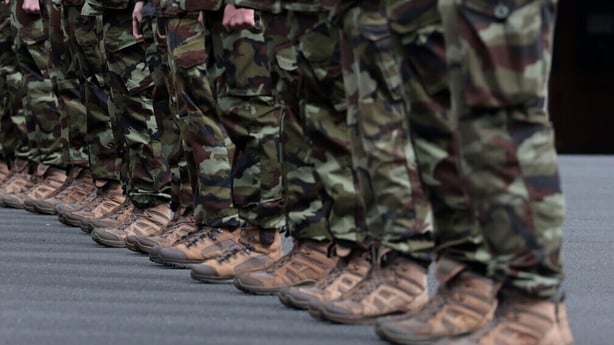
Ireland has already been intensifying its involvement in PESCO, the EU-sponsored system encouraging member states to group together to develop new military assets where it makes sense.
According to official figures, in 2021 Ireland was an observer in only one PESCO project and a participant in another.
By mid-2023 Ireland was participating in four and an observer in a further 19 projects, many of which involve developing undersea security assets.
Yet, Ireland remains open to the perception of free-riding on European defence, if often articulated through op eds and think-tanks, even if the Government can point to the big increase in defence spending.
"There has been some growth [in spending] in recent years," said Fenella McGerty, senior fellow for defence economics at the International Institute for Strategic Studies (IISS).
"But it is still very low. Given the sentiment across the EU, I suspect there will be greater pressure.
"There is always the pressure on NATO members [to increase spending], but now as it shifts towards the EU we might start to see a bit more focus on what Ireland can do in terms of bolstering undersea security, but also the cyber security issue with Ireland being a huge technology hub in Europe."
Vulnerabilities
While recent Russian activity off Irish Atlantic waters and Ireland's status as that tech hub have alerted people to these new vulnerabilities, there are those who warn of a deeper and more sinister Russian threat to undermine European unity at every turn, through massive disinformation campaigns and support for far-right, pro-Russia parties.
As per Prime Minister Sánchez's dismissal of Russian troops appearing over the Pyrenees, fault lines of perception (depending on your proximity to Russia) have developed on how serious the threat is.
However, in the context of President Trump's potential disregard for Article 5, NATO's mutual defence clause, even a probing attack by Russia on, say, one of the Baltic States could pose a grave risk, according to Nicu Popescu, senior policy fellow with the ECFR.
His thought experiment depicts a Russia still entrenched in large parts of southern and eastern Ukraine by 2030 "including the country’s resources such as personnel, grain stores, nuclear power plants and military production capacities."
Russia launches a probing attack on a Baltic State, and with a lapsed Article 5, the EU would have to rely on its own mutual support clause (Article 4.27).
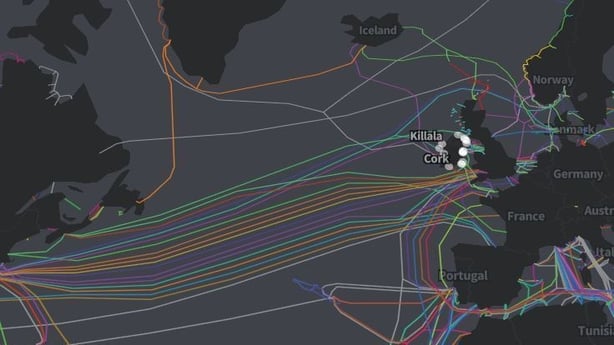
"Russia's hypothetical launch of any provocation against Europe renders the EU response critical," he wrote in a paper this week.
"Any slight hesitation or failure to react with complete unanimity to defend every inch of EU territory would have catastrophic consequences far beyond the immediate military situation.
"The political fallout could lead to the unravelling of the entire European project."
He added: "This scenario presents a danger to all EU members, but especially countries such as Ireland, Portugal or Spain.
"These might be geographically removed from direct Russian military threats but could nonetheless succumb, should the EU present a divided front.
"The destruction of the EU as a political entity would leave the continent’s small and medium-sized countries at the mercy of global powers, fundamentally altering the geopolitical landscape of Europe."
Far-fetched?
Four years ago, few expected Russia to mass 150,000 troops on its border with Ukraine then launch an unprovoked and full-scale attack.
Nor did they expect Donald Trump to return to the White House and threaten Greenland.







